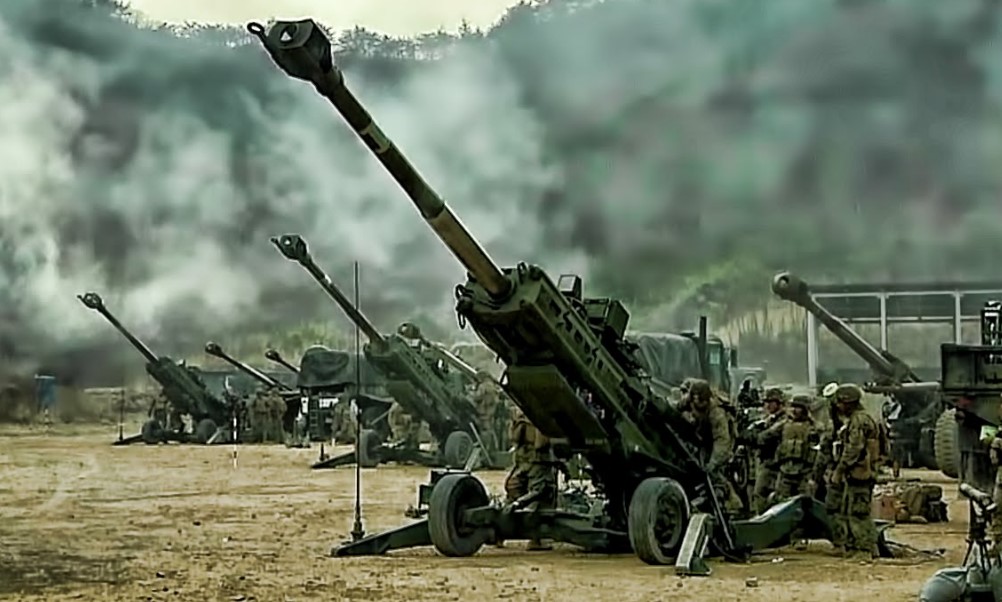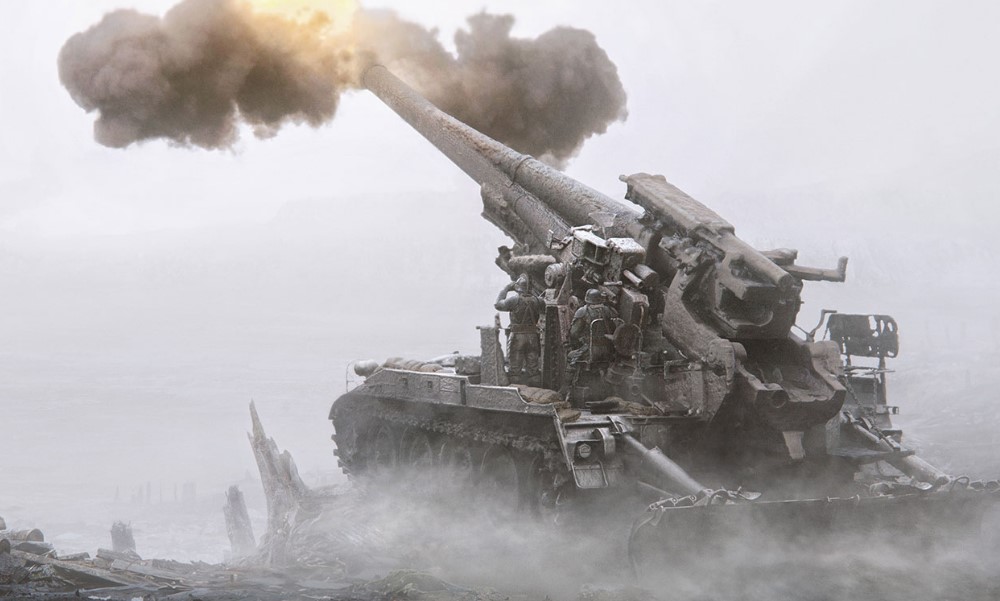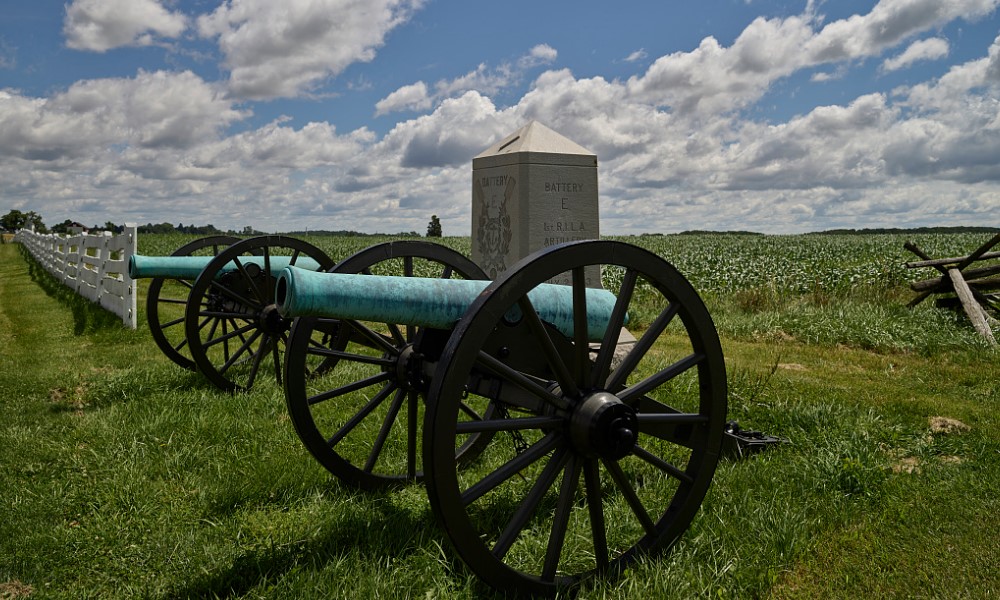Modern warfare has evolved significantly, with artillery battery systems becoming pivotal in achieving tactical supremacy on the battlefield. Artillery batteries are large-scale systems used by military forces to deliver indirect firepower across vast distances, making them a crucial component of ground-based operations. This article explores the key artillery battery systems currently used by defense forces around the world, providing detailed insights into their features, benefits, pricing, and the best places to purchase them.
What is an Artillery Battery?

An artillery battery refers to a group of artillery weapons such as cannons, howitzers, and rockets that are positioned strategically to deliver powerful indirect fire on enemy positions. These systems are designed to offer both offensive and defensive capabilities, enabling military forces to engage distant targets with precision and overwhelming firepower.
Unlike direct-fire weapons, artillery systems fire projectiles at trajectories that allow them to hit targets beyond the line of sight, effectively supporting ground troops by neutralizing enemy forces and disrupting logistical operations from a distance.
Artillery batteries can include both towed and self-propelled systems. Towed artillery requires a separate vehicle for transportation, while self-propelled artillery integrates mobility and firepower into a single platform. Both types have unique advantages, depending on the operational requirements.
Key Roles of Artillery Batteries in Modern Warfare

- Long-Range Fire Support: Artillery systems can strike targets from distances exceeding 50 kilometers, allowing ground forces to engage the enemy without exposing themselves to direct fire.
- Suppressive Fire: Artillery bombardment can suppress enemy forces, creating openings for infantry and mechanized units to advance.
- Tactical Flexibility: Artillery systems provide commanders with the flexibility to adapt to changing battlefield conditions, shifting from offense to defense as needed.
- Cost-Effective Destruction: Artillery shells and rockets, compared to guided missiles or airstrikes, offer a cost-effective solution for delivering destruction over wide areas.
Benefits of Using Modern Artillery Battery Systems

Modern artillery systems offer a range of benefits, particularly in terms of their accuracy, mobility, and firepower. Understanding these advantages is critical for defense organizations and military planners who are looking to enhance their combat capabilities.
1. Extended Range and Firepower
One of the main benefits of modern artillery systems is their ability to deliver powerful strikes over long distances. For example, systems like the K9 Thunder can fire projectiles over 50 kilometers, ensuring that ground forces can engage targets far beyond their immediate vicinity. This long-range capability allows commanders to conduct operations without needing to expose their troops to enemy fire.
2. Enhanced Accuracy
Many of today’s artillery systems come equipped with advanced GPS and radar-based targeting technologies. These systems ensure that projectiles hit their intended targets with pinpoint accuracy, reducing the likelihood of collateral damage. For example, the M777 Lightweight Howitzer is renowned for its precision, even at long distances.
3. Scalability and Versatility
Artillery batteries can be scaled up or down based on the mission at hand. In high-intensity conflicts, large batteries can deliver overwhelming firepower, while smaller, mobile units can provide support for more agile operations. Systems like the CAESAR Self-Propelled Howitzer exemplify this versatility, offering rapid deployment and mobile fire support.
4. Support for Ground Troops
Artillery systems act as a critical support tool for ground forces, particularly during offensive operations. By suppressing enemy defenses, artillery creates opportunities for infantry, tanks, and other ground units to move forward without encountering heavy resistance. This is especially vital in situations where the enemy is well-fortified or entrenched in defensive positions.
5. Cost-Effective Destruction
Compared to other forms of long-range weaponry such as cruise missiles, artillery systems offer a cost-effective solution for delivering destruction over large areas. The ammunition used in artillery systems, such as shells and rockets, is considerably cheaper than precision-guided munitions, making artillery a cost-efficient option for prolonged conflicts.
Top 5 Artillery Battery Systems for Military Use
Let’s take a closer look at the top five artillery battery systems currently used by defense forces worldwide. Each system has been selected based on its performance, features, and proven effectiveness in combat scenarios. We will also include detailed product comparisons to help you make an informed decision.
1. M777 Lightweight Howitzer
The M777 Lightweight Howitzer is one of the most widely-used artillery systems by the U.S. military. Known for its portability and precision, the M777 has become a cornerstone of modern artillery strategies. It is a 155mm towed howitzer that can be easily airlifted into combat zones, making it ideal for mobile forces.
- Use Case: The M777 is ideal for rapid-deployment forces that require both mobility and firepower. It is commonly used in expeditionary missions where transportation is a challenge.
- Advantages: Lightweight, portable, highly accurate, and capable of long-range strikes.
- Disadvantages: Requires a large crew for setup and maintenance, and its towed nature makes it less mobile than self-propelled systems.
- Price: $2.5 million per unit.
- Key Features: GPS-guided targeting system, automated fire control, and reduced weight for easy transportation by helicopters or trucks.
2. PzH 2000 Self-Propelled Howitzer
The PzH 2000 is a German-made self-propelled howitzer that boasts one of the highest rates of fire among modern artillery systems. With its 155mm cannon, the PzH 2000 can deliver up to 12 rounds per minute with remarkable accuracy. Its automated loading system and advanced targeting capabilities make it a top choice for high-intensity combat scenarios.
- Use Case: The PzH 2000 excels in high-intensity conflicts where sustained artillery fire is needed. Its speed and firepower make it an invaluable asset for large-scale military operations.
- Advantages: Automated loading system, rapid rate of fire, heavily armored, long range.
- Disadvantages: High maintenance costs, requires significant logistical support.
- Price: $4.5 million per unit.
- Key Features: Automatic loading, advanced radar-guided targeting, and heavy armor protection for the crew.
3. M270 Multiple Launch Rocket System (MLRS)
The M270 MLRS is one of the most versatile rocket artillery systems used by NATO forces. It can fire a variety of rockets and tactical missiles, allowing it to engage multiple types of targets with ease. With a range of over 70 kilometers, the M270 is capable of launching multiple precision-guided rockets in rapid succession.
- Use Case: The M270 MLRS is ideal for striking large enemy formations or delivering area suppression in combat zones. It is also highly effective for neutralizing key infrastructure targets.
- Advantages: High mobility, wide range of munitions, long-range capabilities.
- Disadvantages: Requires significant maintenance and logistical support.
- Price: $2 million per unit.
- Key Features: Rapid reload system, GPS-guided munitions, ability to fire multiple rockets in a single salvo.
4. CAESAR Self-Propelled Howitzer
The CAESAR Self-Propelled Howitzer is a French-made system mounted on a 6×6 truck chassis. This unique design offers a combination of mobility and firepower, making it one of the most flexible artillery systems on the market. The CAESAR can fire 155mm shells with precision, and its mobility allows for rapid deployment in a variety of terrains.
- Use Case: CAESAR is ideal for rapid-response forces that require both artillery support and the ability to operate in diverse environments, such as urban or desert warfare.
- Advantages: Highly mobile, cost-effective, easy to operate.
- Disadvantages: Lower rate of fire compared to heavier systems.
- Price: $5 million per unit.
- Key Features: Advanced fire control systems, lightweight chassis, and automated targeting.
5. K9 Thunder
The K9 Thunder is a self-propelled howitzer developed in South Korea. With its 155mm cannon, the K9 Thunder offers one of the longest ranges in modern artillery systems. Its fully automated fire control system allows for rapid response times, and its armored design provides superior protection for the crew.
- Use Case: The K9 Thunder is well-suited for long-range bombardments and heavy fire support during sustained combat operations.
- Advantages: Long-range, automated loading system, heavily armored, and highly durable.
- Disadvantages: High operational costs, heavy weight reduces speed compared to lighter systems.
- Price: $8 million per unit.
- Key Features: Advanced automatic loading, superior range, and reinforced armor for crew protection.
Product Comparison Table
| Product | Use Case | Advantages | Disadvantages | Price | Key Features |
|---|---|---|---|---|---|
| M777 Lightweight Howitzer | Mobile forces, rapid deployment | Lightweight, portable, long-range | Large crew required | $2.5 million | GPS-guided targeting, lightweight design |
| PzH 2000 Self-Propelled | High-intensity combat | High rate of fire, automated, armored | High maintenance costs | $4.5 million | Automatic loading, radar-guided targeting |
| M270 MLRS | Area suppression, multiple targets | High mobility, versatile munitions | Logistical demands | $2 million | Rapid reload, GPS-guided munitions |
| CAESAR Self-Propelled Howitzer | Rapid-response, urban warfare | Mobile, easy to operate, cost-effective | Lower firing rate | $5 million | Lightweight chassis, advanced fire control |
| K9 Thunder | Long-range bombardment | Long-range, automated, highly durable | High operational costs | $8 million | Automatic loading, superior armor |
Benefits of Using Modern Artillery Battery Systems
Using modern artillery battery systems brings numerous benefits to any military force, enabling them to handle diverse combat situations with greater efficiency and accuracy.
1. Improved Combat Efficiency
Modern artillery systems like the PzH 2000 can sustain rapid rates of fire while maintaining accuracy, ensuring that forces can deliver powerful, concentrated firepower in a short amount of time. This efficiency helps in weakening enemy defenses quickly.
2. Enhanced Mobility
Self-propelled systems such as the CAESAR and K9 Thunder offer the advantage of mobility, allowing forces to reposition their artillery units rapidly as the battlefield situation evolves. This is particularly useful in fast-paced operations or when dealing with shifting frontlines.
3. Reduced Operational Costs
While advanced, modern artillery systems use significantly less expensive ammunition compared to guided missiles or airstrikes. Artillery shells and rockets can deliver devastating power without the high price tag associated with other forms of long-range strikes.
4. Safety and Protection for Crew
Systems like the K9 Thunder and PzH 2000 are equipped with reinforced armor, providing enhanced protection for crews operating in hostile environments. This reduces the risk of casualties and increases operational longevity.
Where to Buy Artillery Battery Systems
Acquiring artillery systems generally involves working with military equipment suppliers and defense contractors. Here are some leading suppliers of modern artillery systems:
- BAE Systems – BAE Systems is a global defense contractor known for producing advanced military equipment, including the M777 Lightweight Howitzer.
- Rheinmetall Defence – Rheinmetall is the manufacturer of the PzH 2000, one of the most advanced self-propelled artillery systems available today.
- Lockheed Martin – Lockheed Martin produces the M270 MLRS, a versatile and widely-used rocket artillery system.
How to Purchase Artillery Systems
Most artillery systems are sold through defense contracts and require government approval for purchase. The process typically involves:
- Inquiries: Contact the supplier directly to inquire about the system’s availability and pricing.
- Contracts: Artillery systems are generally sold under defense contracts, so it is essential to have the necessary permits and clearances in place.
- Logistics: Many artillery systems require specialized transport and assembly, so plan for the logistics involved in acquiring and deploying them.
Use Cases for Artillery Systems
Long-Range Fire Support
Systems like the K9 Thunder are ideal for providing long-range fire support during large-scale military operations. Their extended range allows forces to strike targets without exposing themselves to counterattacks.
Area Suppression
The M270 MLRS excels at area suppression, where multiple rockets are launched in quick succession to neutralize large enemy formations or entrenched positions. This system is perfect for overwhelming enemy defenses in a short period.
Tactical Flexibility
The M777 Lightweight Howitzer offers tactical flexibility in operations where mobility is critical. Its lightweight design and rapid deployment capabilities make it suitable for expeditionary forces that need to move quickly between combat zones.
FAQs
1. How does an artillery battery work?
An artillery battery operates as a group of large-caliber weapons, such as howitzers and rocket launchers, that deliver indirect fire onto enemy targets. Artillery units work in coordination with forward observers and command centers to ensure that their fire is accurate and effective.
2. What is the typical range of modern artillery systems?
Modern artillery systems like the K9 Thunder and PzH 2000 can have ranges exceeding 40 to 50 kilometers, depending on the type of ammunition used.
3. Can artillery systems be purchased by private entities?
No, artillery systems are typically reserved for government and military use due to their destructive capabilities. Purchasing them requires government contracts and appropriate permits.
4. What is the difference between towed and self-propelled artillery?
Towed artillery, such as the M777, requires a separate vehicle for transportation, making it more suitable for mobile operations. Self-propelled artillery, like the PzH 2000, combines firepower and mobility in a single platform, allowing it to move and fire independently.
5. How much do artillery systems typically cost?
The cost of artillery systems varies widely depending on their capabilities. For example, the M777 Lightweight Howitzer costs around $2.5 million, while advanced self-propelled systems like the K9 Thunder can exceed $8 million.